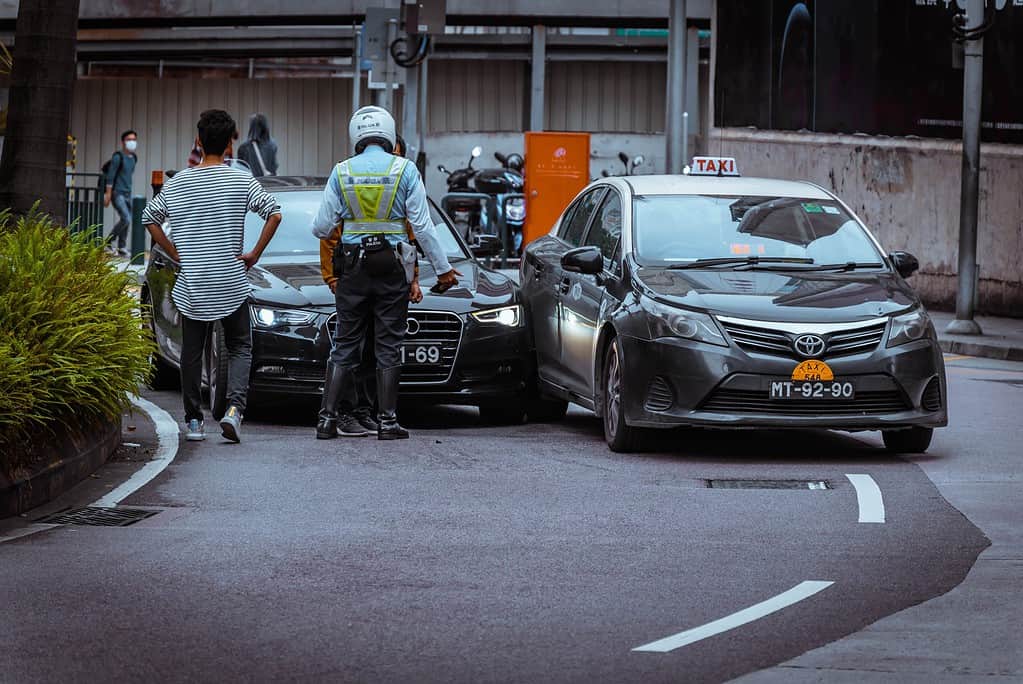Car accidents happen in various ways. The events are almost endless, from minor crashes to head-on collisions at high speeds.
However, rear-end collisions are among the most common types of auto accidents. Data from the National Highway Traffic Safety Administration shows that rear-end incidents made up 32.5% of all car accidents in 2019.
So then, who is responsible for a rear-end collision? In Louisiana, La. R.S. 32:81 rule holds the motorist who rear-ends the leading vehicle accountable for any accident-related losses. But there are certain exceptions.
Here’s what you need to know about liability for rear-end collisions in Louisiana and how a Louisiana car accident attorney can help.
What Is a Rear-End Collision?
By definition, a rear-end collision is a kind of auto crash that happens when a car driver slams into the car in front of them. Distracted driving, tailgating, and poor weather conditions are common causes of rear-end crashes.
Establishing Fault for Rear-End Accidents
Every driver is responsible for maintaining a safe distance from other cars on the road, which varies based on vehicle speed, road conditions, and many other factors.
Drivers who violate this obligation are negligent. So, the driver who rear-ends the lead car will almost always be held at least partially responsible for the accident.
However, there are times when the driver of the rear-ended vehicle may be at fault, such as when:
- The lead vehicle abruptly moves in reverse
- The brake lights on the lead car are not working properly
- The lead driver suddenly and without any reason slams the brakes (brake checks), or
- The lead vehicle has a mechanical issue, but the driver doesn’t move it to the side of the road.
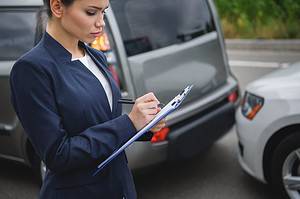
What happens when the lead and trailing drivers are at fault in an accident?
The regulations differ from state to state per comparative and contributory negligence laws. Louisiana follows the pure comparative negligence doctrine, meaning if you contributed to the collision, your compensation would reduce by your percentage of fault.
Is Brake Checking Illegal in Louisiana, and Is the Brake Checker at Fault?
Brake checking is a type of road rage that occurs when a lead vehicle deliberately hits on the brakes to startle, annoy, or frighten a trailing driver. That forces the trailing driver to brake rapidly or veer into another lane to prevent a crash.
Brake checking is risky since it might result in rear-end accidents and even violent fights between the lead and trailing cars. Brake checking is almost always a traffic offense, and in extreme circumstances, it may result in criminal charges for reckless driving.
If you rear-end somebody who brake-checks you, you may be able to hold them partially or entirely accountable for the collision. But you must prove that the driver braked intentionally and for no reason.
Demonstrating deliberate brake checks takes work. Usually, the brake-checking motorist will attempt to accuse you of tailgating or try to explain why he had to brake abruptly.
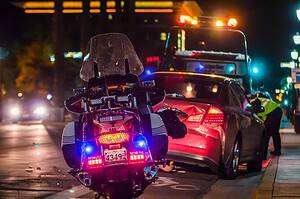
Track down any witnesses who may have observed the brake check and search for any doorbell or surveillance cameras within the vicinity that could have captured the collision.
Refrain from talking to anyone about the collision, including the other motorist, their lawyer, or the insurance representative, if anyone is blaming you for brake-checking.
Do not apologize to the driver trailing behind since doing so might indicate wrongdoing or guilt. Consult a Louisiana car accident attorney, especially if you are worried about possible criminal repercussions.
Examples of Possible Rear-End Accident Scenarios
Scenario 1: Pedestrians on the road resulting in rear-ended cars
Driver A suddenly brakes to avoid knocking down a kid who dashed onto the street. Driver B rear-ends Driver A due to the abrupt halt.
Although it was unexpected for a kid to rush out onto the road, Driver B is responsible for failing to maintain a safe gap between their vehicle and the vehicle in front of them.
Scenario 2: Poor vision causes drivers to rear-end cars
Cruising down a dirt road is Driver A. Driver B, who is trailing behind, has difficulty seeing because of the dust cloud that the dirt is releasing.
Driver A stops accordingly at a stop sign ahead. Driver B crashes directly into Driver A’s back because he can’t see. Driver B is responsible for failing to keep a safe distance to compensate for their reduced vision and give the dust enough time to clear.
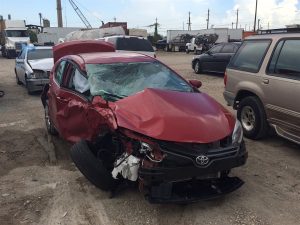
The same is true for a visual mishap caused by fog. Every motorist must maintain a safe speed and some distance in low-vision conditions to give themselves ample time to stop if necessary.
Scenario 3: Lane switching causes rear-end collision
Driver A starts to merge over after flashing his blinker to signify a lane change. Driver B accelerates in expectation of a free lane, but Driver A changes his mind and shifts back to his previous lane.
Driver B rear-ends Driver A after failing to halt quickly enough. Driver B will be held accountable for not maintaining enough distance between their vehicle and the vehicle in front of them when stopping.
Driver A made a slightly irregular movement; therefore, they may be partially liable under Louisiana’s pure comparative negligence law.
Scenario 4: Reckless turns can lead to high-speed collisions
Driver A is in the center lane and wants to turn right into a petrol station. He stomps on the gas pedal to overtake Driver B, but because he isn’t moving quickly enough, Driver B rear-ends him.
In this unusual case, Driver A is at fault because Driver B could not have anticipated Driver A’s inappropriate driving behaviors.
“Chain Reaction” Rear-End Car Accidents
There may be instances where more than two cars are entangled in a rear-end collision; these incidents almost always occur at intersections or when there’s heavy traffic. This case results in a domino effect—a chain reaction where one vehicle rear-ends several others.
Generally, Car B rams into Car A, the lead car ahead of them. Car B suddenly stops without braking or flashing its brake lights, which causes Car C to crash into the rear of Car B. That creates a chain reaction in a multi-car collision that leaves Car A and Car B rear-ended.
It is easy to identify the at-fault party using the rear-end accident liability principles illustrated above. Once again, the liable party is often the motorist in the rear who started the chain.
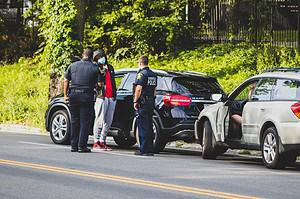
For instance, if Driver C hits Driver B from behind—who halted at a red light behind Driver A—Driver B’s car may be pushed into Driver A due to the first collision. In this situation, Drivers A and B would claim damages from Driver C.
Under rare circumstances, Driver B may cut off Driver C and cause an initial rear-end collision. Driver B may then crash into Driver A as a result. In this case, Driver B would be at fault in the eyes of Driver A and C. But you don’t often see a motorist bold enough to squeeze between two moving automobiles.
You might be eligible for compensation from several at-fault drivers if you were involved in a chain reaction. Consult an experienced Louisiana car accident attorney to understand your particular situation better.
Common Injuries Suffered in Louisiana Rear-End Collisions
Rear-end collisions typically don’t result in many positive outcomes. Generally speaking, surviving a car collision with relatively minor wounds or, better still, escaping unscathed is the most favorable outcome.
But in the end, there are always property damage and hospital bills to deal with. Below are some common injuries suffered in rear-end collisions.
Whiplash injuries
A whiplash is a form of stiffness and discomfort in the neck and shoulder region that occurs when a car occupant is abruptly propelled forward by the force of an accident.
Occasionally, this involves a forward and backward snap, which strains the neck and spine beyond their usual range of motion. This sudden neck, shoulders, and spine movement is the “whip” action that gives “whiplash” its name.
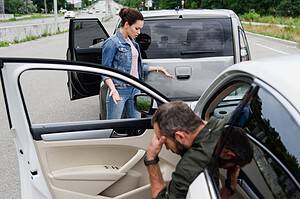
According to the NHTSA, about 20% of all parties engaged in rear-end crashes sustain whiplash injuries. Nearly 80% complain of discomfort and soreness that persists for a week or more. Furthermore, 50% of people have pain and soreness that lasts more than a year.
Back injuries
Your spine may sustain catastrophic injuries if your vehicle is rear-ended. That happens because the spine is a fragile structure that cannot endure the kinds of shocks inflicted by machines.
A rear-end collision may compress the spine, resulting in disc herniation, facet injury, or spinal cord and nerve injury. It may be a big deal considering the spine and neck are crucial to the functioning of the human body.
Additionally, the spine’s extensive network of nerves makes these injuries very painful and unsettling.
Head and face injuries
Nowadays, almost all vehicles come with airbags intended to shield the head and face in the event of a crash.
These devices mark an indispensable advancement in automotive safety and are believed to have saved almost as many lives as seat belts. However, having an airbag does not guarantee you protection from injury.
Generally, most rear-end crashes occur at slow speeds. Since airbags only deploy in accidents occurring when the car is moving at roughly 20mph, they probably won’t deploy in a rear-end crash.
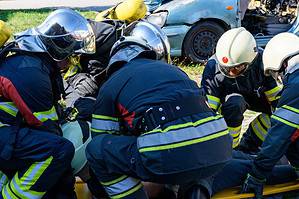
Your face might crash into the dashboard or steering wheel if an airbag doesn’t inflate. Your face hitting one of these rough items might cause a traumatic brain injury, break your nose, injure your eye socket, or even break your cheek or cheekbone.
Besides these severe repercussions, slamming into the steering wheel, dashboard, or airbag may result in scratches, bruises, and head and facial scrapes. When a vehicle rear-ends another at high speed, the airbag may deploy, posing considerable risks of its own.
Arm and hand injuries
Arm, hand, and wrist injuries are a real threat since most individuals hold on to the steering wheel when slammed in a rear-end crash.
These bodily parts may jolt violently, bump into objects, get pinned, or even sustain fractures due to the impact.
Even though these wounds might not seem as severe as other wounds, living with a severely disabled arm can be quite challenging.
How to Avoid Rear-end Motor Vehicle Accidents
You can take several measures to lower the risk of causing a rear-end collision.
- Increase the distance between your vehicle and the one in front. The more significant the gap between the cars, the more time you have to stop your vehicle.
- Avoid distraction when driving since it’s one of the leading causes of rear-end accidents.
- Check your mirrors if you don’t think the motorist behind you will stop in time.
- Brake early to give the vehicle in front of you ample time to stop safely.
- Examine your safety equipment, such as your brake lights, which are crucial for alerting drivers behind that you are stopping.
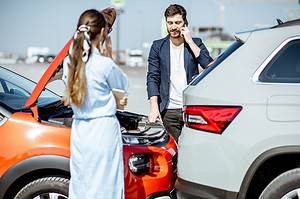
- Take note of the weather and drive safely. Wet roads may be a considerable problem that frequently results in rear-end incidents, especially in Louisiana.
- Awareness of your surroundings is your best line of defense. Always look through your mirrors when you are at a stoplight. Keep an eye out for symptoms of inattentive or intoxicated drivers in the vehicle in front of you when driving. Drive safely by paying attention to changes in the road and its circumstances. These suggestions may seem easy to follow but being keenly aware of your surroundings may go a long way toward ensuring your safety.
Potential Damages from Louisiana Rear-end Collisions
It is possible to be involved in a rear-end accident with minimal car damage but suffer significant injuries.
Contact a knowledgeable and experienced Louisiana car accident attorney to discuss your options for pursuing damages for injuries sustained in a rear-end collision. These damages may consist of the following:
Economic damages from rear-end collisions
Economic damages are easy to prove and calculate. They include:
- Lost wages
- Medical costs
- Vehicle damage
Non-economic damages from rear-end collisions
Non-economic damages are broader losses that are more challenging to quantify. These harms may result from emotional or physical anguish. Comparatively, general damages are frequently 1.5 to 5 times as expensive as economic damages. But this number can vary greatly.
Multiple defendants in a rear-end collision
If a claim involves several defendants covered by different insurers, the settlement value may increase since there will be more coverage for your damages.
However, dealing with multiple liable parties may complicate your case and prolong the claim resolution. That’s because rear-end crashes frequently include many vehicles, as mentioned earlier.
Settlements and Compensation in Louisiana Rear-end Collision Cases
No apology or auto repair will ever be enough to make up for causing severe injury to someone or losing a loved one.
Furthermore, it cannot pay for your medical bills, which may accrue rapidly in the wake of your injury. Available support can place you in the best condition following a rear-end collision, even if you might never return to your pre-accident state.
You can only get so far in your medical rehabilitation with the help of your own Personal Injury Protection (PIP). In Louisiana, any injuries that exceed the standard $15,000.00 coverage might qualify as “serious injuries” to seek compensation from the liable party.
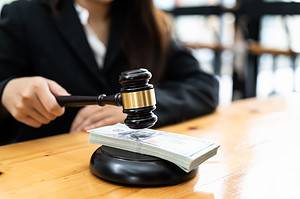
With a knowledgeable and tenacious attorney, you can collect financial compensation that covers your medical bills, lost earnings, physical and mental anguish, and other expenses.
The last thing any accident victim wants is to suffer a lifetime’s worth of medical bills and financial struggles when they already have to cope with the stress of their physical injuries and damages.
Fault for Rear-End Car Accidents in Louisiana: The Bottom Line?
Never assume the trailing car is at fault in rear-end crashes in Louisiana.
Fault assessments can be tricky, and it’s essential to consider elements that aren’t always obvious after a car accident, whether you were the victim or in the trailing car that hit another from behind.
The easiest way to determine liability in a rear-end accident in Louisiana is to speak with a skilled auto accident attorney.
Legal Giant can help you get the best Louisiana car accident attorneys. Contact us at (855) 740-5024 for a free case evaluation today.
